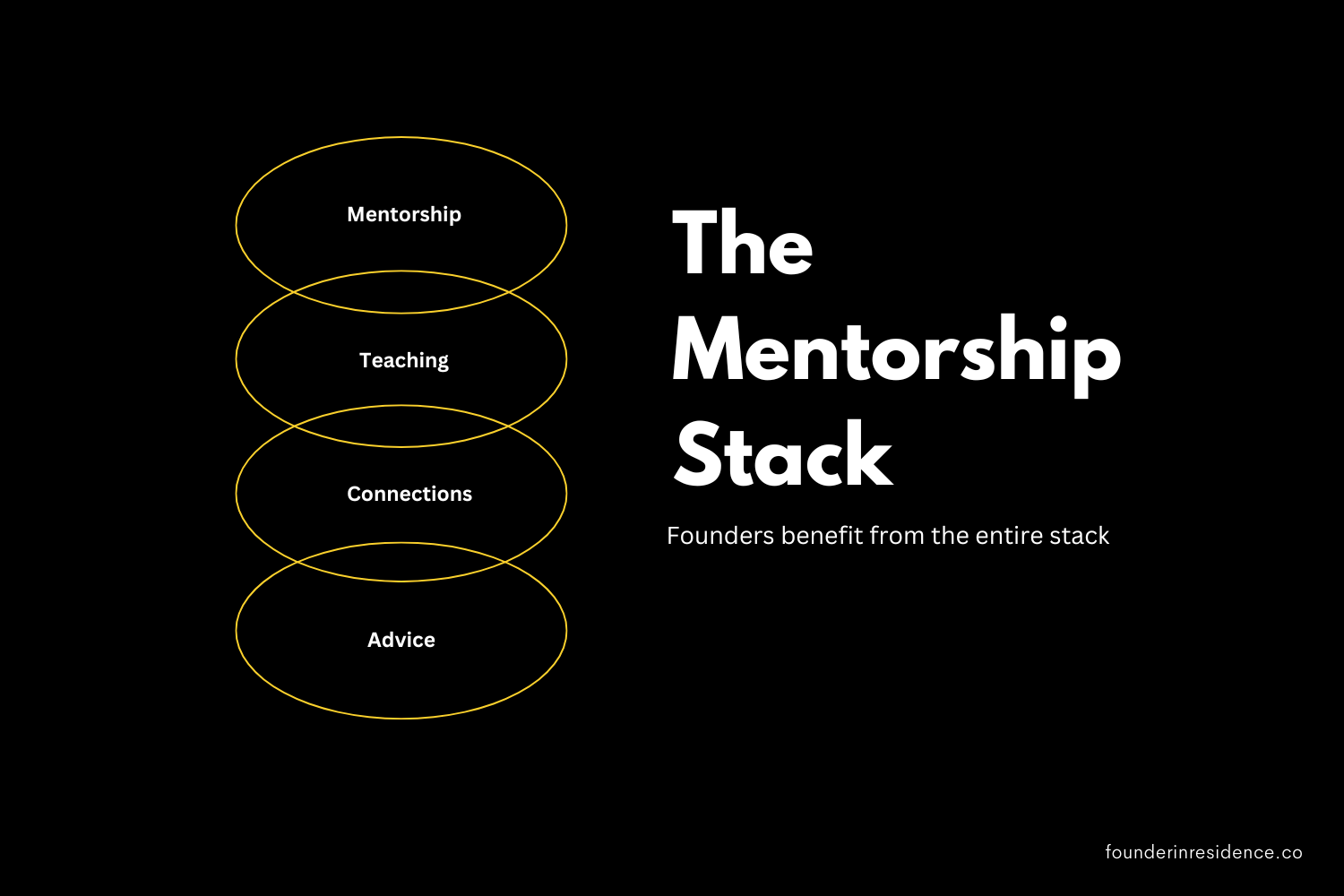I was surprised to be one of four winners of the inaugural Techstars Give First award announced this week. My attitude towards mentoring is pretty simple. When a founder asks for help my default is HELL YES! Always in capitals.
I thought this was a good time to put some thoughts together about mentorship because I've spent a lot of time mentoring, coaching, teaching. Over decades of doing this I've also spent time observing how founders look for mentors and how accelerators and funds create mentorship programs.
By the way, these are my personal thoughts, not Techstars'.
The mentorship stack

If you look at startup mentorship today you'll find a lot of different activities from what I consider true mentorship to giving advice. There's no value judgment here as founders can benefit from the entire stack.
Techstars has the concept of lead mentors and regular mentors based on the level of commitment.
If there is a hierarchy of mentorship activities, commitment is how you measure. Meeting a founder for an hour, no matter how useful, is closer to advice than mentorship because of the low level of commitment. There's less skin in the game.
But time alone is not sufficient to build a relationship with a mentor. Commitment has a personal dimension: both people are choosing to enter into this relationship; it's not transactional.
If you are designing a mentorship program for entrepreneurs you should spend time designing your own Mentorship Stack to reflect your values and the outcomes you want to achieve.
Techstars has done a good job laying out their vision and expectations of mentors in their Mentor Manifesto and Brad Feld's 18 blog posts describing each point.
How could mentorship be even better?
Many mentorship programs focus on attracting the most successful founders in the industries they focus on. Or the highest profile VCs. This builds a virtuous cycle where top mentors attract top founders and vice versa.
If I were running an entrepreneurship program today I would absolutely do this.
But this doesn't mean there isn't a lot of room to innovate. If I were competing with other programs or funds, this is where I would invest.

If you optimize for the greatest expected utility for founders, not just what is the most brand-enhancing, you'll realize there is a Blue Ocean.
It's located in an untapped area outside of the startup echo chamber.
Want mentors who understand creativity, building core skills, overcoming the fear of failure and finding a unique point of view?
Choose artists.
Want mentors who understand discipline, repetition, competition and a winning mindset?
Choose athletes.
Want to understand an experimental mindset, and following the data as a foundation for customer development?
Choose scientists.
None are founders, they haven't had exits, and they would make fantastic mentors.
Here's one last crazy idea:
Want to build a product that will change the world in the future?
Choose a young person to be your mentor.
Breaking the "Master-Apprentice" mold
It's easiest to see the opportunities to make mentorship better if we break the master-apprentice mold. Instinctively I think people still default to this model where mentors have mastered something that they transfer to the entrepreneur.
But this doesn't really fit startups does it?
The one thing that makes a startup a startup is its potential to disrupt. No disruption, no startup.
Each disruption closes the door behind it and becomes part of the landscape that future entrepreneurs will disrupt.
Mentorship in this environment is more diverse, creative and non-linear.
If you follow too closely in the footsteps of a disruptor, you'll risk never becoming one.



